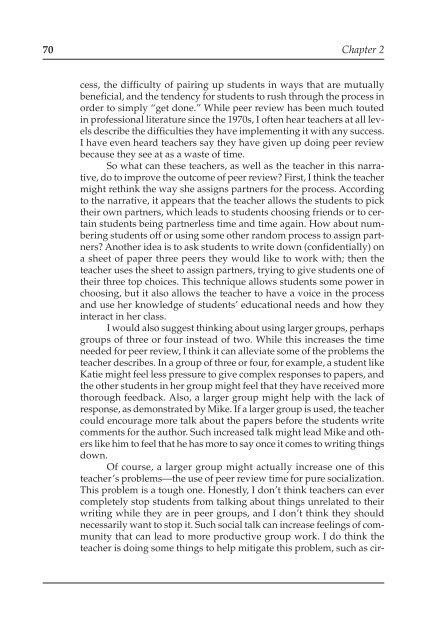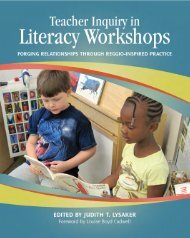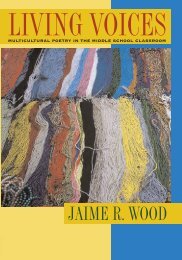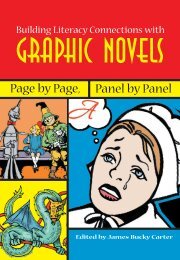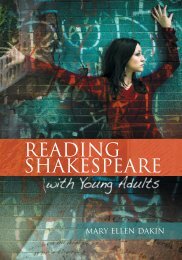2 Narratives about Teaching Writing - National Council of Teachers ...
2 Narratives about Teaching Writing - National Council of Teachers ...
2 Narratives about Teaching Writing - National Council of Teachers ...
- No tags were found...
Create successful ePaper yourself
Turn your PDF publications into a flip-book with our unique Google optimized e-Paper software.
70 Chapter 2cess, the difficulty <strong>of</strong> pairing up students in ways that are mutuallybeneficial, and the tendency for students to rush through the process inorder to simply “get done.” While peer review has been much toutedin pr<strong>of</strong>essional literature since the 1970s, I <strong>of</strong>ten hear teachers at all levelsdescribe the difficulties they have implementing it with any success.I have even heard teachers say they have given up doing peer reviewbecause they see at as a waste <strong>of</strong> time.So what can these teachers, as well as the teacher in this narrative,do to improve the outcome <strong>of</strong> peer review? First, I think the teachermight rethink the way she assigns partners for the process. Accordingto the narrative, it appears that the teacher allows the students to picktheir own partners, which leads to students choosing friends or to certainstudents being partnerless time and time again. How <strong>about</strong> numberingstudents <strong>of</strong>f or using some other random process to assign partners?Another idea is to ask students to write down (confidentially) ona sheet <strong>of</strong> paper three peers they would like to work with; then theteacher uses the sheet to assign partners, trying to give students one <strong>of</strong>their three top choices. This technique allows students some power inchoosing, but it also allows the teacher to have a voice in the processand use her knowledge <strong>of</strong> students’ educational needs and how theyinteract in her class.I would also suggest thinking <strong>about</strong> using larger groups, perhapsgroups <strong>of</strong> three or four instead <strong>of</strong> two. While this increases the timeneeded for peer review, I think it can alleviate some <strong>of</strong> the problems theteacher describes. In a group <strong>of</strong> three or four, for example, a student likeKatie might feel less pressure to give complex responses to papers, andthe other students in her group might feel that they have received morethorough feedback. Also, a larger group might help with the lack <strong>of</strong>response, as demonstrated by Mike. If a larger group is used, the teachercould encourage more talk <strong>about</strong> the papers before the students writecomments for the author. Such increased talk might lead Mike and otherslike him to feel that he has more to say once it comes to writing thingsdown.Of course, a larger group might actually increase one <strong>of</strong> thisteacher’s problems—the use <strong>of</strong> peer review time for pure socialization.This problem is a tough one. Honestly, I don’t think teachers can evercompletely stop students from talking <strong>about</strong> things unrelated to theirwriting while they are in peer groups, and I don’t think they shouldnecessarily want to stop it. Such social talk can increase feelings <strong>of</strong> communitythat can lead to more productive group work. I do think theteacher is doing some things to help mitigate this problem, such as cir-


